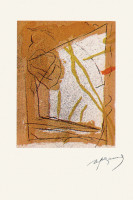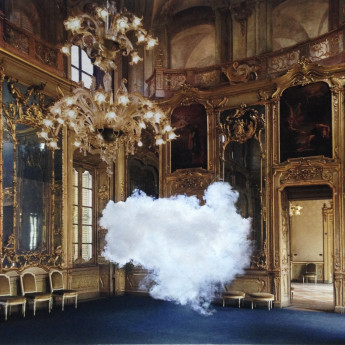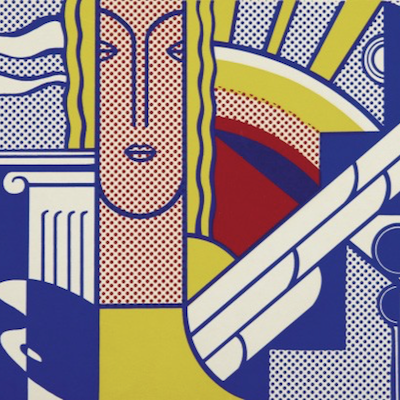
Details
Artist
Styles
// Albert Ràfols-Casamada's Blanc-Mondrian (1998) is a minimalist etching that reflects his appreciation for structure and subtlety, perhaps inspired by the geometric clarity of Piet Mondrian. The composition is framed by a soft blue outline, while delicate black lines intersect within, suggesting architectural or figurative forms. The central black vertical line draws the eye, creating a visual anchor amidst the sparse background. The irregular, sketch-like quality of the lines contrasts with the rigidity often seen in Mondrian's work, imbuing Blanc-Mondrian with a sense of fluidity and openness. Ràfols-Casamada’s approach in this piece balances structured geometry with expressive abstraction, creating a contemplative, open-ended space.
Blanc-Mondrian , 1998
form
Medium
Size
56 x 38 cm
- Inches
- Centimeters
Edition
Price
- USD
- EUR
- GBP
Details
Artist
Styles
// Albert Ràfols-Casamada's Blanc-Mondrian (1998) is a minimalist etching that reflects his appreciation for structure and subtlety, perhaps inspired by the geometric clarity of Piet Mondrian. The composition is framed by a soft blue outline, while delicate black lines intersect within, suggesting architectural or figurative forms. The central black vertical line draws the eye, creating a visual anchor amidst the sparse background. The irregular, sketch-like quality of the lines contrasts with the rigidity often seen in Mondrian's work, imbuing Blanc-Mondrian with a sense of fluidity and openness. Ràfols-Casamada’s approach in this piece balances structured geometry with expressive abstraction, creating a contemplative, open-ended space.
- Recently Added
- Price (low-high )
- Price (high-low )
- Year (low-high )
- Year (high-low )
Albert Ràfols-Casamada
Portfolio 12th Anniversary Of Galeria Joan Prats , 1988
Limited Edition Print
Lithograph
EUR 500
What is late modernism?
Late Modernism refers to the continuation and evolution of Modernist principles in art, architecture, and literature from the mid-20th century into the late 20th century. This movement maintains a focus on form, abstraction, and the rejection of traditional styles, but it often incorporates more complexity and ambiguity compared to early Modernism. Late Modernism explores themes such as alienation, identity, and the fragmentation of reality, reflecting the social and cultural shifts of the post-war period. It is seen in the works of architects like Louis Kahn and artists like Francis Bacon, who pushed the boundaries of Modernism while responding to the changing world around them.



























































